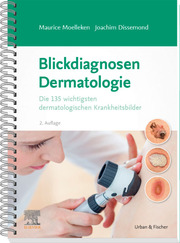Cerebral Hemorrhage (gebundenes Buch)
Cerebral Hemorrhage
Acta Neurochirurgica Supplement 105
Erschienen am
12.11.2008
Bibliographische Informationen
ISBN/EAN: 9783211094686
Sprache: Englisch
Seiten: xiii, 239 S., 200 s/w Illustr., 239 p. 200 illus.
Auflage: 1. Auflage 2009
Bindung: gebundenes Buch
Beschreibung
InhaltsangabeExperimental intracerebral hemorrhage - iron, hemoglobin and free radicals.- Deferoxamine therapy for intracerebral hemorrhage.- Bilirubin oxidation products, oxidative stress, and intracerebral hemorrhage.- Deferoxamine reduces brain swelling in a rat model of hippocampal intracerebral hemorrhage.- The antioxidant effects of melatonin after intracerebral hemorrhage in rats.- Poly(ADP-ribose) polymerase activation and brain edema formation by hemoglobin after intracerebral hemorrhage in rats.- Induction of autophagy in rat hippocampus and cultured neurons by iron.- Effects of superoxide dismutase and catalase derivates on intracerebral hemorrhage-induced brain injury in rats.- Metallothionein and brain injury after intracerebral hemorrhage.- Experimental intracerebral hemorrhage - inflammation and thrombin.- Intracerebral hemorrhage injury mechanisms: glutamate neurotoxicity, thrombin, and Src.- Increase in brain thrombin activity after experimental intracerebral hemorrhage.- Microglial activation and intracerebral hemorrhage.- Concomitant intracerebral infusion of tissue plasminogen activator and thrombin leads to brain injury.- Microglial activation and brain injury after intracerebral hemorrhage.- Effects of aging on complement activation and neutrophil infiltration after intracerebral hemorrhage.- Experimental intracerebral hemorrhage - other mechanisms.- Blood-brain barrier function in intracerebral hemorrhage.- Treatment of stroke and intracerebral hemorrhage with cellular and pharmacological restorative therapies.- Deficiency of CD18 gene reduces brain edema in experimental intracerebral hemorrhage in mice.- Tissue inhibitor of matrix metalloproteinases-3 (TIMP-3) lacks involvement in bacterial collagenase-induced intracerebral hemorrhage in mouse.- Radial glia marker expression following experimental intracerebral hemorrhage.- Long-term effects of melatonin after intracerebral hemorrhage in rats.- Management of delayed edema formation after fibrinolytic therapy for intracerebral hematomas: preliminary experimental data.- Erythropoietin attenuates intracerebral hemorrhage by diminishing matrix metalloproteinases and maintaining blood-brain barrier integrity in mice.- Hyperbaric oxygen for experimental intracerebral hemorrhage.- Effect of amantadine sulphate on intracerebral hemorrhage-induced brain injury in rats.- Experimental intracerebral hemorrhage - model development and characterization.- Long-term behavioral characterization of a rat model of intracerebral hemorrhage.- Neurological deficits and brain edema after intracerebral hemorrhage in Mongolian gerbils.- Rat model of intracerebellar hemorrhage.- A rat model of pontine hemorrhage.- Human intracerebral hemorrhage.- The optimal time-window for surgical treatment of spontaneous intracerebral hemorrhage: result of prospective randomized controlled trial of 500 cases.- Preliminary findings of the minimally-invasive surgery plus rtPA for intracerebral hemorrhage evacuation (MISTIE) clinical trial.- Pediatric cerebrovascular diseases: report of 204 cases.- Xenon-CT study of regional cerebral blood flow around hematoma in patients with basal ganglia hemorrhage.- Preliminary application of pyramidal tractography in evaluating prognosis of patients with hypertensive intracerebral hemorrhage.- Experimental intracranial hemorrhage (non-intracerebral hemorrhage).- Mechanisms and markers for hemorrhagic transformation after stroke.- The clinical significance of acute brain injury in subarachnoid hemorrhage and opportunity for intervention.- Development of a cerebral microvascular dysplasia model in rodents.- Hyperbaric oxygen preconditioning protects against traumatic brain injury at high altitude.- Human intracranial hemorrhage (non-intracerebral hemorrhage).- Genetic considerations relevant to intracranial hemorrhage and brain arteriovenous malformations.- Vasospasm after aneurysmal subarachnoid hemorrhage: need for further study.- Regional cerebral blood flow and oxygen
Inhalt
From the contents Experimental intracerebral hemorrhage - iron, hemoglobin and free radicals.- Experimental intracerebral hemorrhage - inflammation and thrombin.- Experimental intracerebral hemorrhage -other mechanisms.- Experimental intracerebral hemorrhage - model development and characterization.- Human intracerebral hemorrhage.- Experimental intracranial hemorrhage (non-intracerebral hemorrhage).- Human intracranial hemorrhage (non-intracerebral hemorrhage).
Weitere Artikel aus der Kategorie "Medizin/Klinische Fächer"
Derzeit nicht verfügbar

Derzeit nicht verfügbar

Lieferbar innerhalb 24 Stunden

Lieferbar innerhalb 24 Stunden





